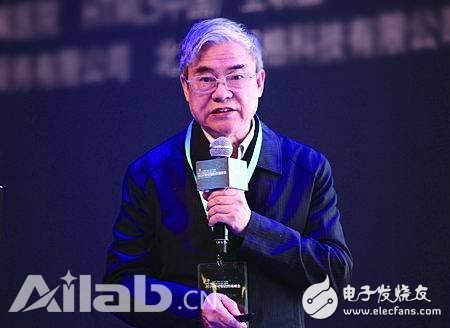Since the beginning of this year, there have been several new developments in the development of the Internet of Things. These new weather will bring new opportunities to the Internet of Things market.
The first is the birth of the international narrowband Internet of Things standard. 60% of the Internet of Things is a low-speed interconnect. This part of the interconnection uses fiber optic and mobile communications. The cost is high and not economical. This is also an important reason why the Internet of Things is difficult to develop. The birth of the international narrowband Internet of Things standard has provided a more economical network choice for the development of the Internet of Things. At the 3GPP conference in Busan, South Korea in June this year, the narrowband Internet of Things standard NB-IoT was approved.

Secondly, 5G promotes the deep integration of the Internet of Things and the mobile Internet, and the Internet of Things becomes one of the main application scenarios of 5G. The 5G design can support 1 million IoT terminals in 1 square kilometer. 5G will greatly expand the application of the Internet of Things and promote the deep integration of the Internet of Things and the mobile Internet.
The third is the promotion of the industry Internet and the "Made in China 2025" strategy, which will promote the penetration of the Internet into various industries, provide means for the transformation and transformation of traditional enterprises, and have wider application fields and greater economic value.
The fourth is that the Internet of Vehicles will become one of the biggest drivers of the Internet of Things. The car itself is the node of the Internet of Things, the Internet of Things is redefining the car, and a good car will have hundreds of sensors. Autonomous vehicles are a concentrated expression of the convergence of the Internet of Things, mobile Internet, cloud computing and big data technologies with advanced automotive technologies. The industry predicts that the global vehicle network is expected to exceed 100 billion euros in 2020, and China will account for 1/3.
The fifth is that the Internet of Things has begun to enter the enterprise-based application era. In the past few years, not many large companies in the world have entered the Internet of Things. Nowadays, large enterprises have entered the field of Internet of Things. Google has acquired a smoke sensor enterprise for US$3.2 billion and has entered the Internet of Things with high-profile. Now Huawei, ZTE, China Electronics, Lenovo, Digital China and the three major telecom operators regard smart city as the main strategic direction of the group, taking the Internet of Things as a business growth point and taking the industry Internet as the main direction. Internet giants such as Baidu, Alibaba and Tencent are also actively participating in the construction of smart cities, focusing on the application of the Internet of Things.
However, it should be noted that the current large-scale development of the IoT market and the fragmentation of products coexist. To drive the fragmentation market to scale, it requires the government to pay for the bill or to develop into a service.
McKinsey & Company listed the Internet of Things as one of 12 disruptive technologies in the next 20 years in 2013. It is estimated that the annual economic impact of the global Internet of Things will reach $6.2 trillion by 2025. However, the demand for IoT products varies from industry to industry. Most sensor products are initially faced by niche customers or the long tail market. For a long time, the Internet of Things has fragmented standards and applications, which restricts The scale effect of the Internet of Things products. If the product has no scale, the price will not be able to fall, which in turn will affect the promotion. To solve these problems, the government's mode of buying or buying services will play a big role in promoting.
At the same time, China's projects and strategies such as cloud computing, big data, "Internet +", China Manufacturing 2025, and smart cities are all related to the Internet of Things. How to coordinate the advantages of various departments and regions to jointly promote the development of the Internet of Things There is still a lot of work to be done.
In short, in addition to high-end sensors, industrial bus technology, industrial Internet logo standardization, wireless sensor network frequency coordination issues, Internet of Things management, IoT data open use and privacy protection, etc., involving technology, management and regulations, etc. need to pay attention to Short board and targeted solution.
Open And Close Electric Quantity Acquisition Module
Open And Close Electric Quantity Acquisition Module,Electric Quantity Acquisition Module,Switching Outdoor Current Transformer,Outdoor Switching Current Transformer With Puncture
Zibo Tongyue Electronics Co., Ltd , https://www.tongyueelectron.com